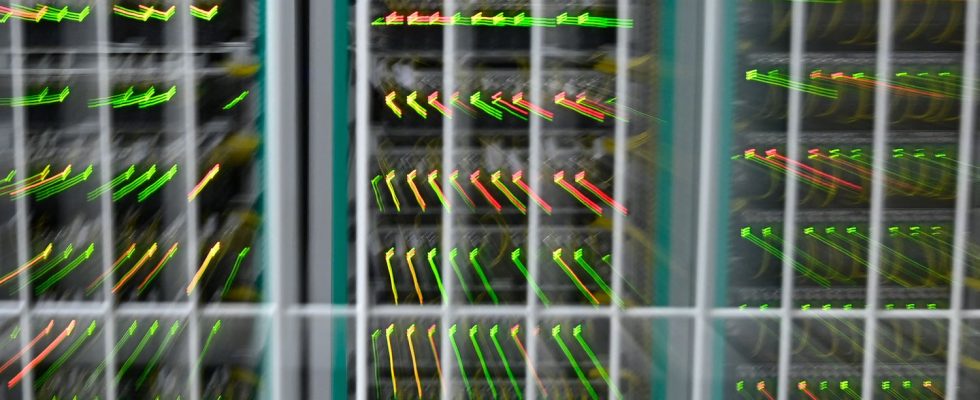Without them, there is no Internet. Data centers, these digital factories filled with servers and computers, are more and more numerous. Very energy-intensive and greedy for rare metals, data centers are the second source of digital pollution behind our terminals.
Published
Update
Reading time: 2 min

Every time you post a photo on Instagram, watch a video on TikTok, send a message on WhatsApp, a data center is activated somewhere on the planet. These digital factories mostly resemble huge, ultra-secure hangars. Inside, armies of cabinets stacking servers and computers. These data centers operate 24 hours a day.
According to the International Energy Agency, these data centers currently consume 1.5% of the world’s electricity. And this figure could reach 10% in 2030.
“The biggest problem with data centers is that they heat up. “They consume a lot of electricity and at the same time produce a lot of heat.”
Bruno Bzeznik, research engineer at Grenoble-Alpes University.at franceinfo
“One of the main roles of data centers, continues Bruno Bzeznik, research engineer at Grenoble-Alpes University, collective member EcoInfo, a CNRS collective specializing in the study of the environmental impact of digital technologyis to cool these servers and computers efficiently.”
For digital giants, data centers are a strategic asset. Not just because they store our most intimate data. “These data centers not only have an environmental footprint, but also a cost. recalls Bruno Bzeznik. “IThey seek to optimize this cost by being as efficient as possible“, he explains. Cooling of machines with outside air, heat recovery for district heating, water recycling, development of renewable energies, data centers are at the cutting edge of modernity.
Rare metals in servers
According to the Meta website, the firm has invested at least $50 billion to build 21 increasingly sophisticated data centers. Three of them are located in Europe (Denmark, Sweden and Ireland), one in Asia and 17 in the United States. They must enable Meta to respond to ever-increasing needs. A demand that is increasing every day with the development of artificial intelligence, which is very demanding in requests for servers.
At the end of November, Mark Zuckerberg’s firm inaugurated one of the most modern data centers in the world. It is located 1 hour’s drive from Chicago, in DeKalb, Illinois. Some 300,000 m2 of buildings powered 100% by renewable energies, says Meta. Inside, robots mainly take care of maintenance.
But energy consumption is not the only ecological footprint of data centers, emphasizes Bruno Bzeznik. “For build a server, it will take energy to make them. Sometimes even more energy than it will consume during its lifetime. And you need materials. Among which we find rare metals, the extraction of which is sometimes the source of conflict“, explains the engineer.
At our level, we also all have a way to limit the development of the number of data centers in the world. By asking them less. To do this, you will have understood, we must, for example, post less on our social networks or clean up our inboxes.
